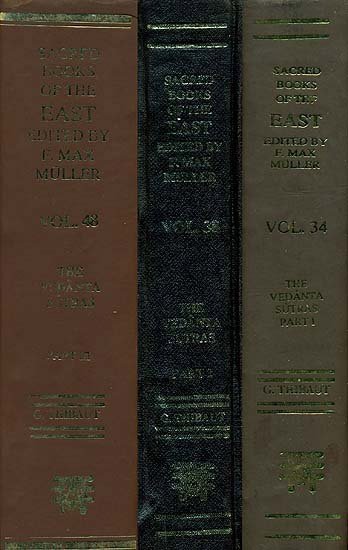Brahma Sutras (Ramanuja)
by George Thibaut | 1904 | 275,953 words | ISBN-10: 8120801350 | ISBN-13: 9788120801356
The English translation of the Brahma Sutras (also, Vedanta Sutras) with commentary by Ramanuja (known as the Sri Bhasya). The Brahmasutra expounds the essential philosophy of the Upanishads which, primarily revolving around the knowledge of Brahman and Atman, represents the foundation of Vedanta. Ramanjua’s interpretation of these sutras from a V...
Sutra 2.2.21
21. There is non-establishment of pratisankhyā
and apratisaṅkhyā destruction, on account of non-interruption.
So far the hypothesis of origination from that which is not has been refuted. The present Sūtra now goes on to declare that also the absolute (niranvaya) destruction of that which is cannot rationally be demonstrated. Those who maintain the momentariness of all things teach that there are two kinds of destruction, one of a gross kind, which consists in the termination of a series of similar momentary existences, and is capable of being perceived as immediately resulting from agencies such as the blow of a hammer (breaking a jar, e.g.); and the other of a subtle kind, not capable of being perceived, and taking place in a series of similar momentary existences at every moment. The former is called pratisaṅkhyā-destruction; the latter apratisaṅkhyā-destruction.—Both these kinds of destruction are not possible.—Why?—On account of the non-interruption, i.e. on account of the impossibility of the complete destruction of that which is. The impossibility of such destruction was proved by us under II, 1, 14, where we showed that origination and destruction mean only the assumption of new states on the part of one and the same permanent substance, and therefrom proved the non-difference of the effect from the cause.—Here it may possibly be objected that as we see that a light when extinguished passes away absolutely, such absolute destruction may be inferred in other cases also. But against this we point out that in the case of a vessel of clay being smashed we perceive that the material, i.e. clay, continues to exist, and that therefrom destruction is ascertained to be nothing else but the passing over of a real substance into another state. The pioper assumption, therefore, is that the extinguished light also has passed over into a different state, and that in that state it is no longer perceptible may be explained by that state being an extremely subtle one.
